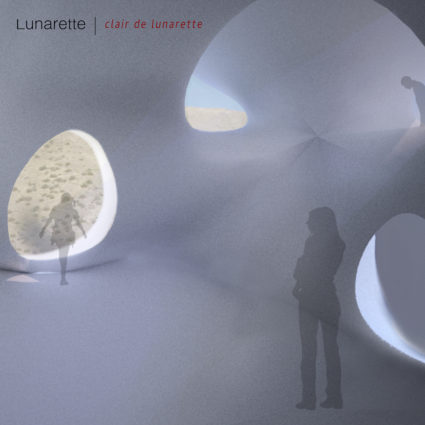
Lunarette - Clair de Lunarette [EP]
“Lucky One” […] sees Lunarette trade the jangly dual guitar attack of their previous outfit for a softer, more new-wave focused approach without losing their uncanny knack for huge pop hooks.” – FLOOD
“Austin St.” is a shuffling, stoic slice of retro-pop” – The Alternative
“Your only choice is to let these melodies wash over you and transport you to an oasis of calm.” – The Revue on “Messing”
What seemed like the end for the band Gingerlys in 2018 was the fresh start for Lunarette. Members Kevin Doxsey, Brian Alvarez, Colin O’Neill, and Jackie Mendoza chose to start anew and return to the studio with Connor Hanwick (prod. Gingerlys LP) to record their shimmering debut, Clair de Lunarette.
Striving for release, both personal and communal, Lunarette lean into the pop sensuality of their polished, electronic world. Lush, swirling guitar layered over dynamic, jangling synth melodies fill Clair de Lunarette’s atmosphere with equal parts mystique and charm.
A shuffled groove and chorus-tinged guitar set the scene of Clair de Lunarette’s lead single “Austin St.” Ephemeral synth fills out the contemplative, hook-heavy daydream led by vocalist Jackie Mendoza’s charming, resonant voice, which meshes expertly into the soft haze of colorful musicianship. While “Austin St.” doubtlessly throws it back to dream pop hits of the past, the song’s tight, booming production places it distinctly in the present, lending the tune a unique timelessness.
The EP’s second single is the pulsing number “Lucky One,” a windows down indie pop cruiser. Guided by Mendoza’s hazy, longing vocals, “Lucky One” features a driving synth bassline that, like “Austin St.,” simultaneously pulls listeners forward, while tugging on the heartstrings of retro pop nostalgia.
Clair de Lunarette’s final single “Messing” is a melancholy pop song that speaks to the universal experience of feeling insecure around someone you admire. This sensation’s emotional tumult translates through nuanced key changes and chord voicings that create a fertile sonic environment that opens up the song’s theme for broader interpretation. At times Mendoza and O’Neill trade off vocal lines, and at others they harmonize, further underscoring the song’s broadly applicable motifs while emphasizing the group’s compositional acumen.

